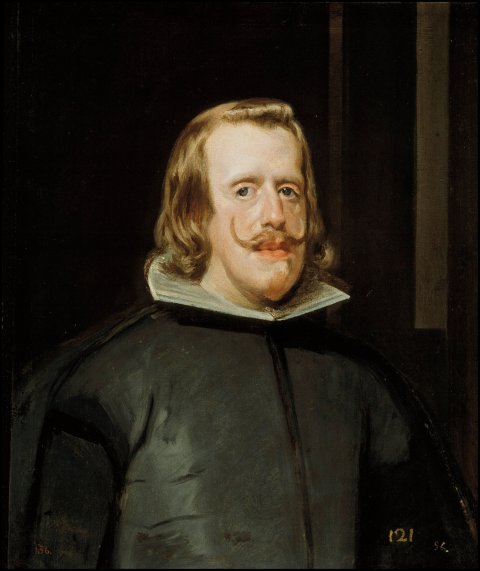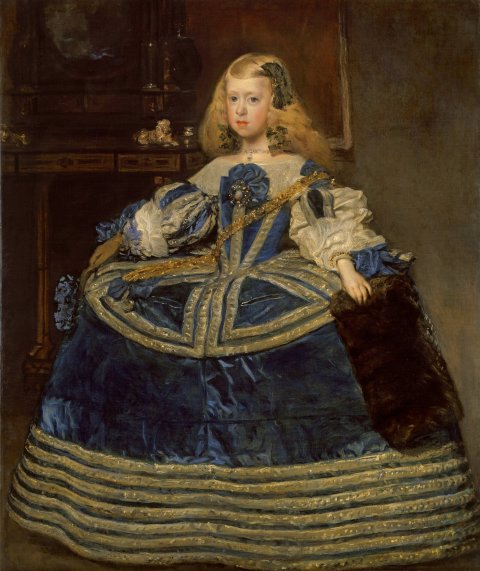We like it when our cultural icons play the outsider: Charles Bukowski crowned as the "Poet Laureate of Skid Row," Jean-Paul Sartre spurning the Nobel Prize for Literature because of a distaste for "official honors," Muhammad Ali refusing to be inducted into the U.S. Army to fight overseas because "I ain't got no quarrel with them Viet Cong,"Sinéad O'Connor shredding an image of Pope John Paul II on Saturday Night Live.
On the other hand, we have Diego Velázquez, who was the consummate insider, a court painter with no qualms about his cozy position near Spain's royals. He was neither a revolutionary nor an iconoclast, even by the standards of the 17th century. The paintings he executed at the service of King Philip IV have an exacting and austere beauty, an attention to human detail that finds all it seeks in the subjects: how the pope purses his lips, the slender grace of an infant princess's fingers. Let Pollock have his drunken outbursts, Gauguin his romantic reveries in Tahiti. What drew Velázquez was pure craft -- mastery soberly mastered.
That craft goes on display at Madrid's Museo del Prado on Oct. 8 in an exhibition titled Velázquez and the Family of Philip IV, which gathers 30 works by the Seville-born artist and acolytes like Mazo (his son-in-law) and Carreño. They span the period from 1649 until his death in 1660, encompassing his second trip to Rome and the final fruitful decade at the court of Philip. During this time, he produced his most famous painting, Las Meninas (or The Maids of Honor), a masterpiece of intrigue that, by itself, guaranteed Velázquez a place in the highest echelon of the artistic canon. Also in the show, for which paintings have been borrowed from Vienna, New York and Paris, are works like the dark and delicate Infanta Margarita in a Blue Dress and the depiction of Pope Innocent X, looking as if he's locked in a staring contest with the devil.

Philip IV, for his part, is ashen, the eyes drooping and unfocused, perhaps with an awareness that he is presiding over a declining empire. Indeed, when Velázquez was born, in 1599, the Golden Age of the Hapsburg monarchs was winding toward its conclusion. After an apprenticeship with Francisco Pacheco -- a better teacher than painter -- he found a position at Philip's court, where he would remain for the rest of his life, eventually also assuming administrative duties similar to those of a curator.
His biography is boring, perhaps. His works, though, are not, even if they are not always welcoming to the casual viewer. As art historian Willibald Sauerländer wrote in The New York Review of Books: "[His] pictures elude subjective empathy. You cannot get on familiar terms with them, but only admire their colorful polish from afar. They stand before the observer like a sovereign granting an audience."
Realism rules here: things as they were, not as they could or should be. Unlike the mystical, hyperbolic El Greco, who came before him, Velázquez was not given to religious reveries; unlike Goya, who came after, he did not reach into the darkest crevices of the human heart. Velázquez painted what he saw. Luckily for us, he saw superbly.

Velázquez, moreover, has always been relevant to Spain's conception of itself; it was in decline during his time, as empires to the north were rising. The same is happening today, with the Mediterranean countries mired in debt, seeking help from the likes of Germany. It seems natural enough that in a time of tumult, a culture would turn to its most trusted touchstones. Explains Javier Portús, senior curator of Spanish painting at the Prado: "Velázquez is one of the reference points for our collective memory. Over the centuries, we have frequently used his works to reflect on ourselves and our history, in the manner of a mirror."
Some have suggested that with Spain in a recession and its cultural institutions ailing, the Prado is mounting a Velázquez exhibition because he is sure to draw crowds of both Spaniards and tourists. Prado spokeswoman Maria de la Peña Fernández-Nespral disputes that assertion. "That is not the purpose," she says.
But those are secondary considerations, if not tertiary ones. Let the critics squabble over them. Look, instead, at the portrait La Infanta Margarita, a flower blooming yet rigid, constrained by her own splendor. Or Felipe Próspero, with his indelibly delicate features. A dog reposes in an armchair, far more at ease than its master. Nor do you ever need an excuse to linger in front of the great mystery that is Las Meninas. No more than you need an excuse to fall in love.






















